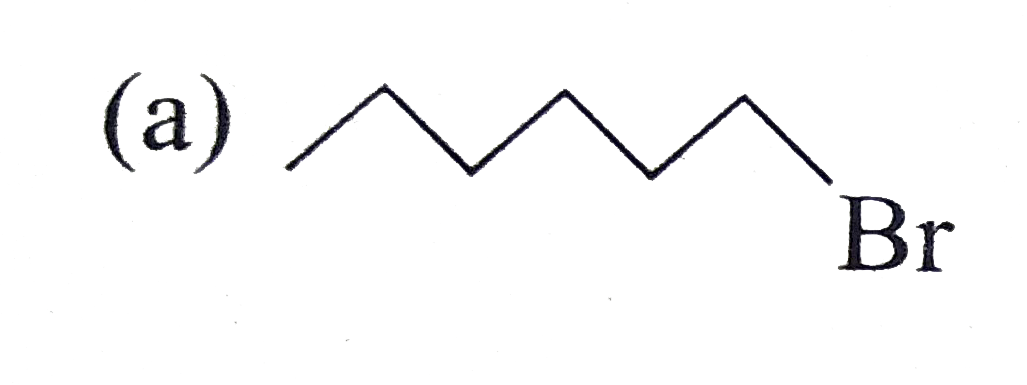
Deduce the structure of 'A' :




The correct Answer is:C
Step by step video, text & image solution for Deduce the structure of 'A' : by Chemistry experts to help you in doubts & scoring excellent marks in Class 12 exams.
Updated on:21/07/2023Topper's Solved these Questions
- HALIDESBOOK - HIMANSHU PANDEYCHAPTER - HALIDESEXERCISE - Level 2 (Q.151 To Q.165)
15 Videos
- HALIDESBOOK - HIMANSHU PANDEYCHAPTER - HALIDESEXERCISE - More Than One Correct (Q.1 To Q.25)
25 Videos
- HALIDESBOOK - HIMANSHU PANDEYCHAPTER - HALIDESEXERCISE - Level 2 (Q.101 To Q.125)
25 Videos
- GENERAL ORGANIC CHEMISTRYBOOK - HIMANSHU PANDEYCHAPTER - GENERAL ORGANIC CHEMISTRYEXERCISE - Subjective Type Problems
19 Videos
- ISOMERISMBOOK - HIMANSHU PANDEYCHAPTER - ISOMERISMEXERCISE - Subjective Type Problems
11 Videos
Similar Questions
An organic compound 'A'(C4H10O) is optically active. On mild oxidation, it gives a compound 'B'(C4H8O) but upon vigorous oxidation, it gives another compound 'C'(C3H6O2). The compound 'C' along with 'D' are also formed from 'B' by reacting with iodine in the presence of alkali. Deduce the structures of 'A','B','C' and 'D'.
View SolutionAn ether ‘A’ (C5H12O) when heated with excess of hot concentrated HI produced two alkyl halides which on hydrolysis from compounds B and C. Oxidation of B gives an acid D whereas oxidation of C gave a ketone E. Deduce the structures of A, B, C, D and E.
View SolutionAn ester A(C4H8O2), on treatement with excess of methyl magnesium bormide followed by acidification, gives an alcohol B as the sole organic product. Alcohol B on oxidation with NaOCl followed by acidification gives acetice acid. Deduce the structures of A and B. Show the reactions involved.
View SolutionAn ester C4H8O2 (A) on treatment with excess of methyl magneium chloride followed by acidification gives an alcohol (B) as the sole organic product. Alcohol (B), on oxidation with NaOCl followed by acidification gives acetic acid. Deduce the structures of (A) and (B) and show the reactions involved .
View SolutionAn ester (A) (C4H8O2) , on treatment with excess methyl magnesium chloride followed by acidification, gives an alcohol (B) as the sole organic product. Alcohol (B), on oxidation with NaOCI followed by acidification gives acetic acid. Deduce the structures of (A) and (B). show the reactions involved.
View SolutionAn optically active alcohol A (C6H10O) absorbs 2 mol of hydrogen per mole of A upon catalytic hydrogenation and gives a product B. The compound B is resistant to oxidation by CrO3 and does not show any optical activity Deduce the structures of A and B.
View SolutionAn organic compound (A) has a characteristic odour. On treatment with NaOH, it forms compounds (B) and (C). Compound (B) has molecular formula C7H8O which on oxidation gives back (A). The compound (C) is a sodium salt of an acid. When (C) is treated with soda-lime, it yields an aromatic compound (D). Deduce the structures of (A), (B), (C) and (D). Write the sequence of reactions involved.
View SolutionAn organic compoud [A] which has characteristic odour on treatment with NaOH forms two compounds [B] and [C]. Compounds [B] has the molecule formula C7H8O. Which on oxidation gives back compound [A]-The compound [C] is the sodium salt of an acid [C]. When [C] is heated with sodalime, it yield an aromatic hydrocarbon [D]. Deduce the structures of [A], [B], [C] and [D].
View SolutionAn organic compound (A) has a characteristic colour, on treatment with NaOH, it forms compound (B) and (C ). Compound (B) has molecular formula C7H8O which on oxidation gives back (A). The compound (C ) is sodium salt of an acid. When (C ) is treated with sodalime, it yields on aromatic compound (D). Deduce the structures of (A), (B), (C ) and (D). Write the sequence of reactions involved.
View SolutionHydrocarbon [A] with molecular formula C8H8 gave the following reaction:
(a). On shaking with bromine, a bromoderivative [B]C8H8Br2 was formed
(b). Vigorous oxidation of hydrocarbon with alkaline KMnO4 gave the monobasic acid [C]. ltBrgt (c). Acid [C] on distillation with sodalime gave C6H6
Deduce the structures of [A]. [B] and [C] and write the reactions involved.
View Solution
